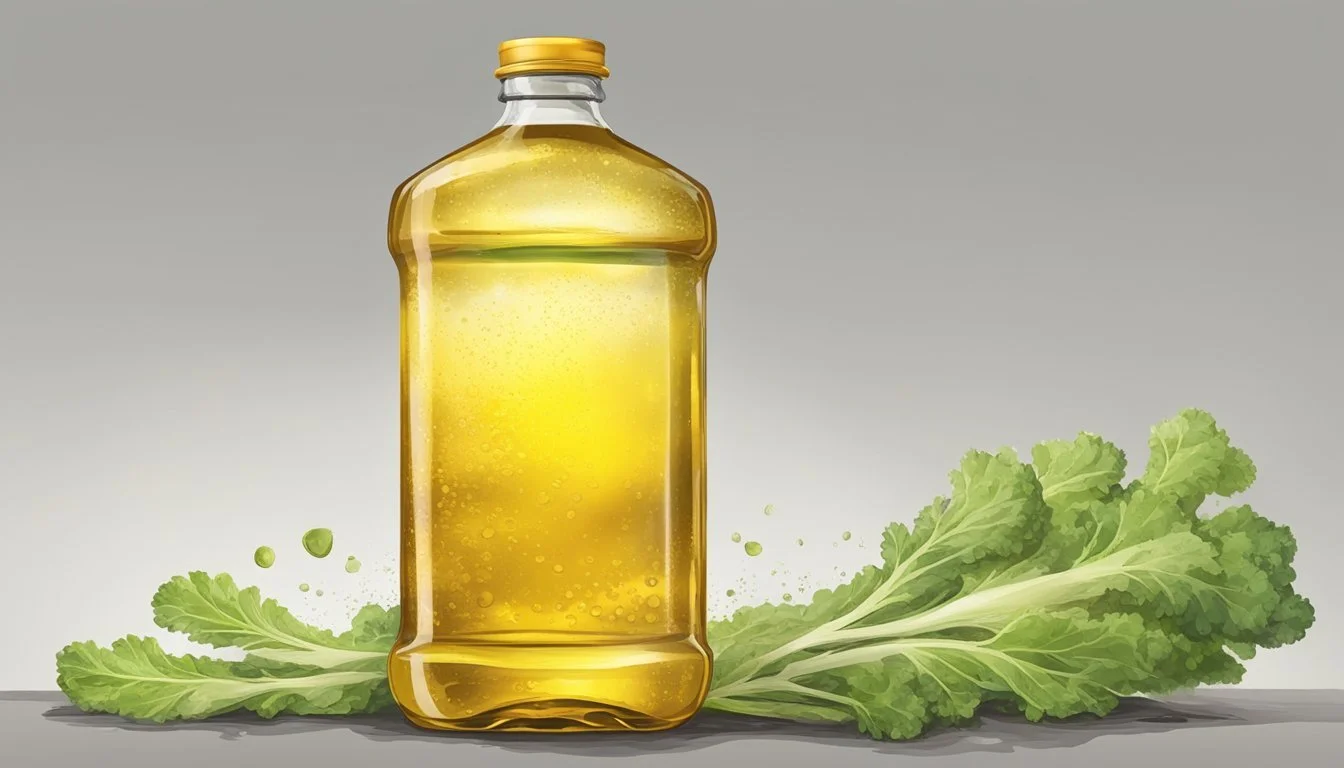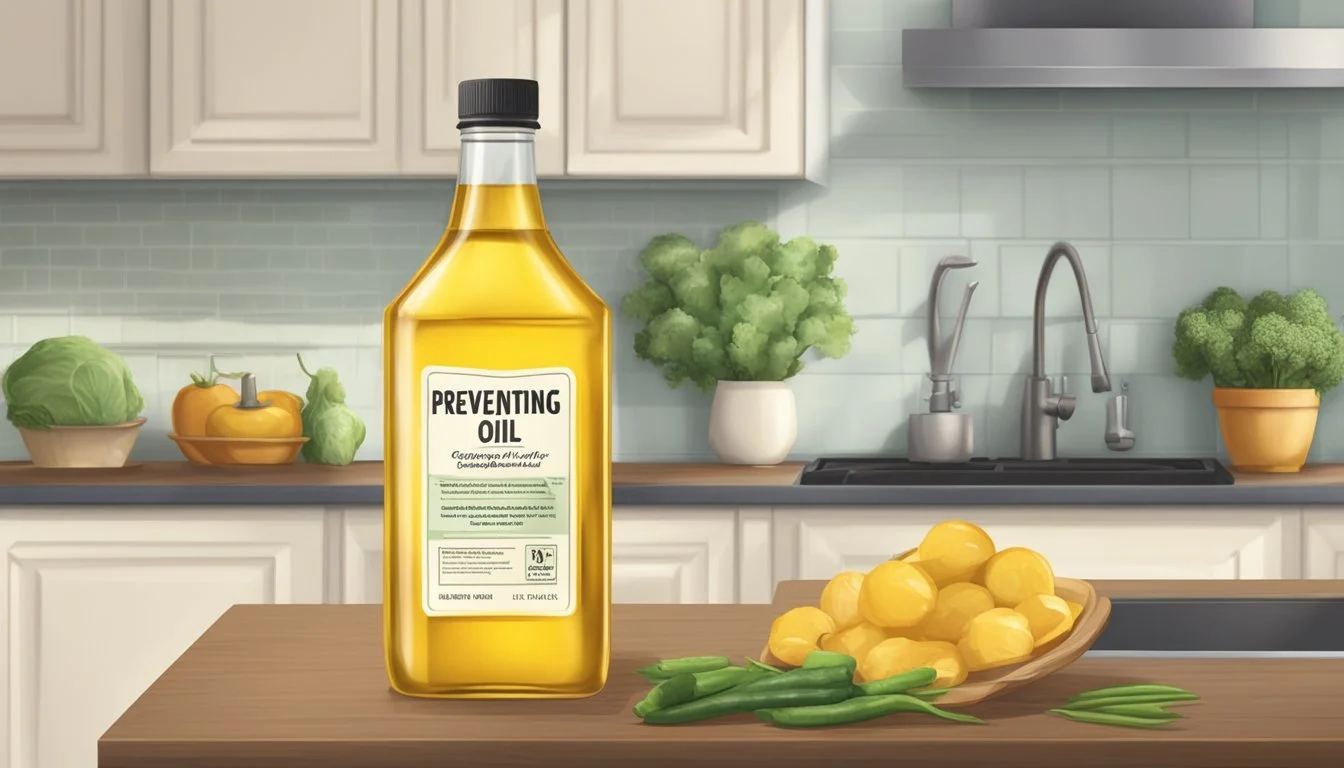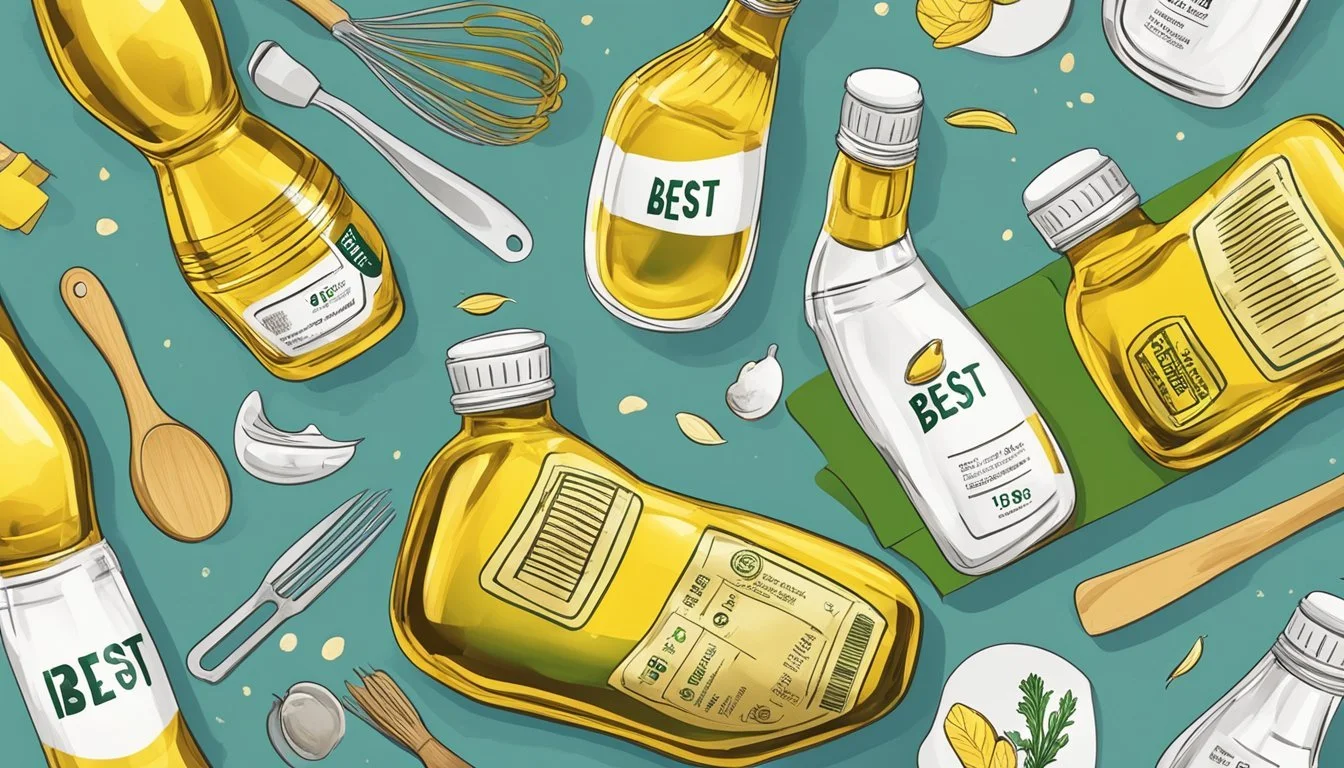Does Vegetable Oil Go Bad?
Understanding Shelf Life and Spoilage Signs
Vegetable oils are a staple in kitchens worldwide, employed in everything from salad dressings to frying. While these oils, including canola, sunflower, and olive oils, are praised for their versatility and health benefits, they are not impervious to spoilage. The question of whether vegetable oil goes bad or not is met with a straightforward answer: yes, it does. The shelf life of vegetable oil is influenced by several factors, such as the type of oil, whether it is open or sealed, and the conditions under which it is stored.
Rancidity is the primary form of spoilage in vegetable oils, occurring when they are exposed to air, light, or heat. These elements accelerate the oxidation process, leading to an off-smell, bad taste, and compromised nutritional quality. While an unopened bottle of vegetable oil can last up to two years when stored properly, once opened, its lifespan shortens to about six months. Recognizing the signs of rancidity is crucial for food safety and quality.
Proper storage can significantly extend the shelf life of vegetable oil. It fares best when kept in a cool, dark location away from heat sources—like a pantry. Refrigeration can further prolong its usability, particularly after opening. Awareness of these storage practices and vigilance for spoilage signs can help ensure that the vegetable oil used in cooking remains fresh and safe for consumption.
Understanding Vegetable Oil Quality
Maintaining the quality of vegetable oil is crucial for both food safety and flavor. This section will dissect the elements that determine vegetable oil quality, different types, and the signs that indicate whether an oil is still good to use.
Components of Vegetable Oil
Vegetable oils consist of triglycerides, which are compounds composed of glycerol and fatty acids. These oils may include a variety of fats, such as saturated, monounsaturated, and polyunsaturated fats, which affect the oil's stability, taste, and health attributes. Antioxidants are also present in some oils, like olive oil, which can help protect the oil from oxidation—a process that can lead to rancidity.
Types of Vegetable Oil
There are numerous types of vegetable oils, each with unique qualities. Common examples include:
Olive oil: Highly praised for its flavor and health benefits.
Canola oil: Known for its low saturated fat content.
Coconut oil: Characterized by a high saturated fat content and solid form at room temperature.
Sesame oil: Distinct for its aromatic flavor.
Soybean oil: A widely used oil with a balanced fat profile.
Avocado oil: Boasts a high smoke point and healthy monounsaturated fats.
Sunflower oil: Valued for its light taste and vitamin E content.
Corn oil: Has a high smoke point and is often used in frying.
Grapeseed oil: Contains polyunsaturated fats and is suitable for high-heat cooking.
Peanut oil: Popular for deep-frying due to its high smoke point.
Palm oil: Rich in saturated fats and often used in processed foods.
Quality Indicators
To assess the quality of vegetable oil, one should consider:
Color: Oils should maintain a consistent, clear appearance. A darker color can indicate degradation.
Aroma: Fresh vegetable oil should have a neutral or characteristic smell; any off-odors can suggest rancidity.
Taste: A fresh, neutral taste is ideal. A sour or bitter flavor typically means the oil is past its prime.
Smoke point: The temperature at which an oil begins to smoke and break down, affecting both flavor and nutrition. Refined oils often have a higher smoke point than unrefined.
It's important to recognize these factors to judge the lifespan and suitability of vegetable oils for consumption and culinary use.
Shelf Life and Expiration
Understanding the shelf life and expiration of vegetable oils is crucial for maintaining their quality and nutritional value. Different factors influence how long these oils last before they degrade or become unsafe for consumption.
Determining the Shelf Life
The shelf life of vegetable oils varies depending on the type of oil and whether the bottle has been opened. Typically, unopened oils such as canola, sunflower, safflower, corn, soybean, and peanut oil can last beyond the best before date by 6 to 12 months. Once opened, these oils generally retain quality for another 6 to 12 months. Here are some specifics:
Canola oil: 6-8 months after opening
Corn oil: Up to 1 year after opening
Grapeseed oil: 3-6 months after opening
Coconut oil (at room temperature): Up to 2 years unopened
Impact of Expiry
After the expiration date, vegetable oils may exhibit signs of rancidity. This can present as a change in color, an off-smelling odor, or an unwelcome taste. Consuming rancid oils is not recommended, as they can contain harmful free radicals and have lost some nutritional value.
Best Before vs. Expiration Date
There is a difference between a "best before" and an "expiration date." The best before date indicates the time frame in which the oil is expected to maintain its optimal quality. On the other hand, the expiration date generally signifies the point after which the oil should not be consumed due to potential safety concerns. It is important to note that oils can still be used after the best before date if they show no signs of rancidity and have been stored properly.
Storage Recommendations
Proper storage of vegetable oil can significantly extend its shelf life and maintain its quality. Key to preserving the oil is understanding the appropriate conditions and differences in handling opened and unopened bottles.
Optimal Storage Conditions
To preserve the integrity of vegetable oil, it should be stored in a cool and dry place, away from direct sunlight and heat sources. A pantry is typically the best location, meeting these conditions. The container should also be airtight to prevent oxidation.
Storing Opened vs. Unopened Bottles
Unopened bottles of vegetable oil have a longer shelf life and can often be stored safely for months past their best by date when kept in the right conditions. Once opened, the oil should continue to be kept in an airtight container. However, its shelf life is reduced to a span of 6-12 months. The key difference stems from exposure to air and potential contaminants that can speed up degradation.
Refrigeration and Freezing
While not always necessary, storing vegetable oil in the refrigerator can further extend its freshness, particularly in warmer climates or during hot seasons. However, some oils may become cloudy or solidify; this change is reversible and does not affect the quality. Freezing vegetable oil is generally not recommended as it can lead to changes in texture and may not extend shelf life appreciably beyond what is achieved through refrigeration.
Signs of Spoilage
Understanding how to identify spoiled vegetable oil is essential for both food quality and safety. This section will outline specific indicators of spoiling.
Visual and Textural Changes
The appearance of vegetable oil can be an initial indication of spoilage. Oils may exhibit changes in color, typically becoming darker. Cloudiness or crystallization may also occur, suggesting that the oil should no longer be used.
Smell and Taste Degradation
A reliable way to determine vegetable oil spoilage is through its smell. If the oil emits a pungent or sour odor, it is a clear sign of rancidity. Taste is another telling factor; the presence of off-flavors is an immediate signal that the oil has gone bad.
Rancidity and Health Risks
Rancid vegetable oil has not only an unpleasant smell and taste but also poses health risks. Consumption of rancid oil can lead to the creation of harmful compounds, which have been linked to various health issues, including an increased risk of cancer. If there are any signs of mold or signs of spoilage, the oil should be discarded to avoid potential consumption of these compounds.
Preventing Oil Deterioration
To extend the lifespan of vegetable oils, one must focus on minimizing exposure to external elements and ensuring airtight storage conditions that slow down the oxidation process.
Protection from External Factors
Light and heat accelerate the oxidation process, which can lead to a rancid smell and unpleasant taste in vegetable oils. To prevent this, oils should be stored in a dark and cool place, ideally at a temperature that is consistently below room temperature. Direct sunlight is particularly harmful as it significantly speeds up the deterioration of the oil. Storing oil in dark-colored bottles can also protect it from light exposure.
Store in a dark place away from any light sources.
Maintain a cool temperature well below room temperature.
Proper Bottle Sealing
Vegetable oils need to be kept away from air and moisture to maintain their quality. Bottles should be tightly sealed after each use to minimize contact with air that can trigger the oxidation process. When oil comes into contact with air, it can result in off-flavors and a reduction in nutritional quality. Using bottles with a pour spout that closes can offer an additional layer of protection against oxidation.
Ensure containers are tightly sealed after use.
Consider pour spouts that limit air entry.
Usage and Safety Tips
When using vegetable oil in cooking or storing it for future use, it’s important to adhere to safety guidelines to ensure the healthfulness of your food and prolong the shelf life of the oil.
Safe Cooking Practices
For general cooking, such as sautéing and baking, users should ensure that the oil is stored properly - in a cool, dark place away from heat sources to prevent oxidation. In the case of deep frying, it's crucial to maintain the oil at the recommended temperature, usually between 350-375°F (175-190°C), to avoid the production of harmful compounds.
Baking: Substitute butter with oil at a 3:4 ratio for a healthier option.
Salad Dressing: Opt for oils with balanced omega-3 and omega-6 fatty acids.
Reusing Oil and Potential Risks
When reusing oil, particularly for deep frying, it should be strained after each use to remove food particles that can quicken deterioration. Typically, oil can be reused 3-4 times, but one should be vigilant of any changes in viscosity or foaming, as these indicate the oil has surpassed its optimal use.
Recipes: Check the smoke point of the oil; higher smoke point oils are better for high-temperature cooking.
Reuse: Limit the reuse of oil to maintain healthy cooking practices.
Using Expired Oils
Consumption of expired oil is not recommended due to potential health risks. Off-smells, a rancid taste, or a change in color are clear indicators that oil should not be used for cooking. Expired oils can also negatively affect the flavor of the final dish.
Expired Oil: Dispose and avoid using in cooking or as salad dressing.
Healthy: Discard oils with any sensory changes to maintain a healthy diet.
Frequently Asked Questions
Vegetable oils are a staple in many kitchens, but there are common concerns regarding their storage, health implications, and freshness. This section provides clear answers to the frequently asked questions surrounding these key areas.
FAQs on Storage and Shelf Life
Storage Conditions: Vegetable oils should be stored in a cool, dark place to prevent oxidation and prolong shelf life. It is recommended to keep them in a tightly sealed container to limit exposure to air and light, which can degrade quality.
Shelf Life Post-Opening:
Canola oil: 6-8 months
Corn oil: 1 year
Grapeseed oil: 3-6 months
Coconut oil (at room temperature): Up to 2 years
FAQs on Health and Consumption
Vegetable oils contain varying levels of polyunsaturated fats, including omega-6 fatty acids. When choosing oils, one may opt for those higher in polyunsaturated and monounsaturated fats for health benefits. However, the refining process can introduce impurities or chemical solvents that some individuals may wish to avoid.
Consumption Tips:
Choose refined oils for high-heat cooking to avoid the degradation of quality.
Opt for unrefined oils for cold dishes or low-heat cooking to preserve nutrients.
FAQs on Identifying Spoilage
Oils can become rancid when they are stored improperly or kept beyond their shelf life. Rancidity is not always immediately apparent, so it's important to know the signs.
Signs of Rancidity:
Smell: If the oil has an off or sour odor, it is likely rancid.
Taste: A bitter or unusual taste is a strong indication the oil has spoiled.
Appearance: Any change in color or the presence of contaminants indicates spoilage.
Safe Disposal: For oils that have gone bad, they should not be consumed. Disposal methods include throwing away the oil or utilizing local disposal programs that accept cooking oil, preventing contamination of water sources.






